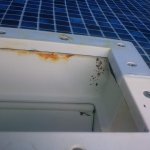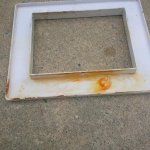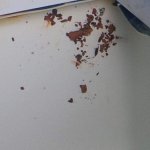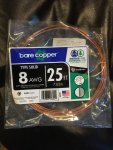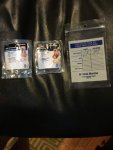I had a new liner installed two years ago and just this year I I noticed some rust in the skimmer...didn't think too much about it till now that I am getting ready to close the pool. I pool the trim plate off and while none of the stainless steel screws seem to be rusted, if I run my finger along the inside of the door there is rust and black particles...I also noticed that you can see the liner from behind the skimmer plate.
I'm worried that water is getting between the skimmer and the metal sides of the pool and rusting. Should they have trimmed the liner more before putting the skimmer in? I also noticed a small rust stain next to one of the pool lights as well....
I was intending to close the pool tomorrow, but I really don't want to leave it all winter like this. I usually don't drain the water below the skimmers, I just use Gizmos.
Any ideas here? I'm thinking I need to lower the water, remove the skimmer cover and see what going on, just not sure what to look for....not sure how it should be installed. Pictures attached....
Thanks
I'm worried that water is getting between the skimmer and the metal sides of the pool and rusting. Should they have trimmed the liner more before putting the skimmer in? I also noticed a small rust stain next to one of the pool lights as well....
I was intending to close the pool tomorrow, but I really don't want to leave it all winter like this. I usually don't drain the water below the skimmers, I just use Gizmos.
Any ideas here? I'm thinking I need to lower the water, remove the skimmer cover and see what going on, just not sure what to look for....not sure how it should be installed. Pictures attached....
Thanks


